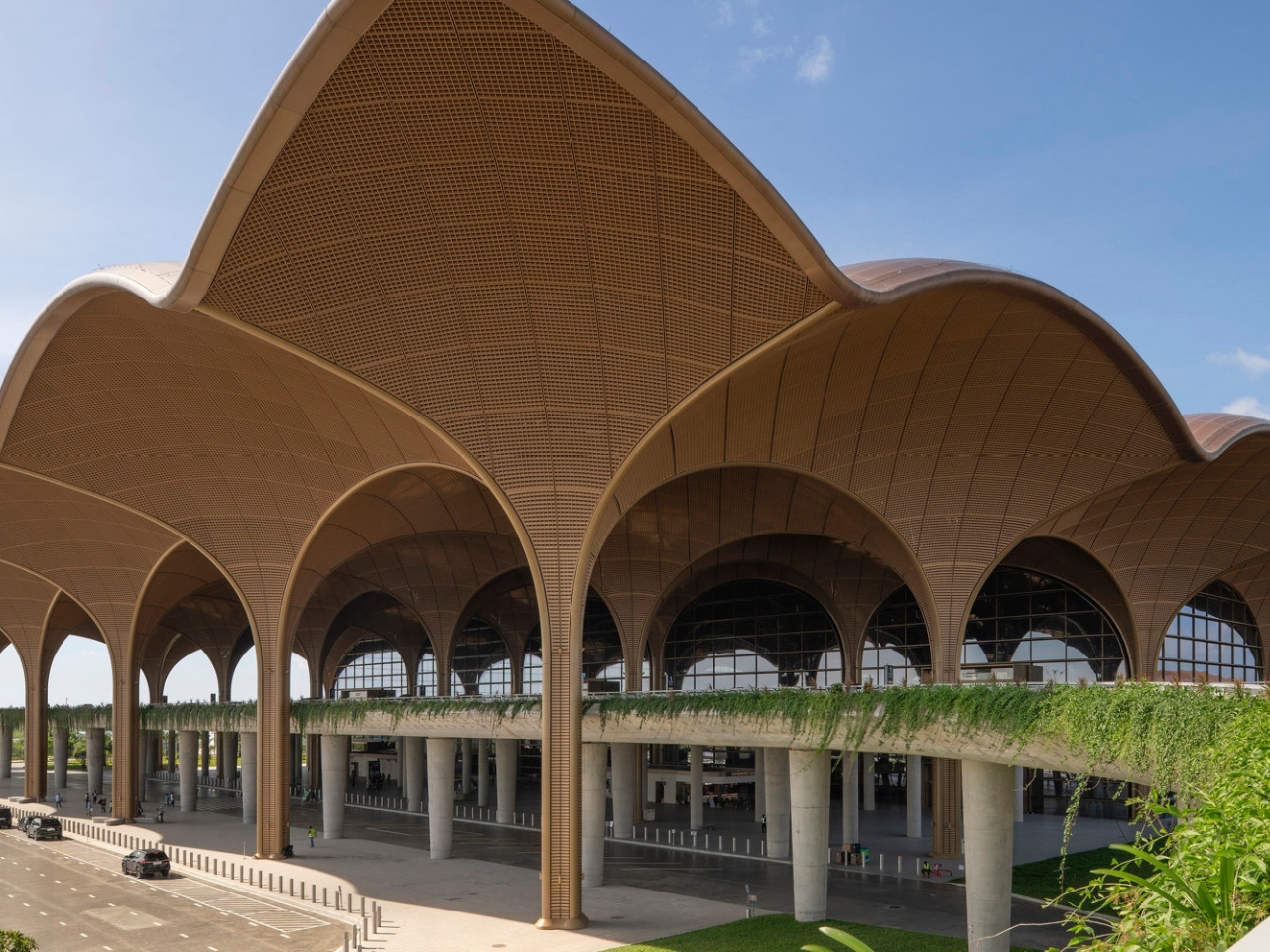Austria's Energy Transition and Tourism Synergy
Explore Austria's energy transition, tourism sustainability, and economic strategies.
Executive Summary
Austria is at the forefront of energy transition, with over 80% of its electricity derived from renewable sources, prominently featuring hydropower. The country capitalizes on its geographical advantages, ensuring energy supply security through a diversified portfolio of wind, solar, and bioenergy. This transition is bolstered by regulatory innovation and systematic approaches to grid modernization, with an emphasis on decarbonizing industries. In parallel, Austria's tourism sector is integrating sustainability through climate adaptation strategies, green mobility initiatives, and renewable-powered tourism infrastructure. These efforts align with the broader policy goal of economic diversification by enhancing tourism's resilience and embedding energy sustainability in touristic experiences. Economic diversification also focuses on fostering regional cooperation. Austria leverages computational methods and agent-based systems to optimize cross-border energy and tourism strategies. The following Python code demonstrates an agent-based model for enhancing regional cooperation in energy resource management: This strategic convergence of energy, tourism, and cooperative frameworks not only enhances Austria's economic resilience but also serves as a model for other nations pursuing sustainable development in a globalized economy.Introduction
The accelerating momentum of energy transition in Europe underscores the strategic importance of sustainability, particularly as nations strive for economic diversification and regional cooperation. Austria stands at the forefront of this movement, leveraging its natural resources and innovative regulatory frameworks to advance its role as a pioneer in energy transition and tourism sustainability. The Austrian model offers a robust example of integrating renewable energy sources, such as hydropower, wind, and photovoltaics, into a coherent framework that supports both economic and ecological objectives.
Austria's commitment to these principles is evident in its high share of electricity from renewable sources, exceeding 80%, with hydropower accounting for 60% of this mix. This strategic diversification, augmented by wind and solar power, not only enhances energy security but also aligns with Austria's broader goals of decarbonization and modernization. Recent technological advancements and regulatory accelerators are critical in this transition, exemplifying Austria's systematic approach to energy management and sustainability.
Recent developments in the energy sector highlight the practical applications of Austria's strategies. For instance, the recent construction of a state-of-the-art green airport in Cambodia illustrates how sustainable infrastructure can revolutionize regional connectivity.
This trend signals exciting opportunities for sustainable tourism, dovetailing with Austria's emphasis on integrating renewable energy into tourist infrastructures. As we delve deeper into Austria's strategies, it's apparent how the interplay of energy transition, tourism sustainability, economic diversification, and regional cooperation can create a resilient and thriving economy.
In this context, Austria's leading methodologies offer a template for other regions aiming to reconcile economic growth with sustainable practices. We will explore these dimensions further, backed by empirical analysis and economic modeling, to uncover the multifaceted benefits of Austria's strategic initiatives.
This HTML introduction provides a comprehensive and technically accurate overview of Austria's leadership in energy transition, the significance of sustainability, and the interconnected themes of tourism and regional cooperation.Background
Austria's energy transition strategy is deeply rooted in a historical context that dates back to the early 20th century. The country has consistently leveraged its geographical advantages, notably its extensive hydro resources, to establish a robust renewable energy sector. This strategic utilization of hydropower has been instrumental in achieving a high renewable energy share, accounting for approximately 60% of Austria's electricity. More recently, Austria has expanded its renewable portfolio to include wind and solar, further diversifying its energy sources.
Key Milestones in Austria's Energy Transition and Tourism Sustainability
Source: Austrian government documentation
| Year | Milestone |
|---|---|
| 2023 | Launch of Renewable Energy Expansion Acceleration Act (EABG) |
| 2024 | Introduction of Carbon Management Strategy (CMS 2040) |
| 2025 | Over 80% of electricity from renewables achieved |
Key insights: Austria is a leader in renewable energy adoption, with a significant share of electricity from renewables. Regulatory frameworks like EABG and CMS 2040 are pivotal in accelerating Austria's energy transition. Austria's commitment to sustainability is evident in its integration of renewables in tourism infrastructure.
In parallel, tourism remains a cornerstone of the Austrian economy, with its alpine regions and cultural heritage attracting millions of visitors annually. The sector contributes approximately 6% to Austria's GDP and has been at the forefront of adopting sustainable practices. Austrian tourism strategies increasingly emphasize climate adaptation and the integration of renewable energy within hospitality and transport infrastructure. Such initiatives are supported by regional cooperation efforts aimed at enhancing economic diversification, leveraging computational methods for tourism analytics, and ensuring sustainable growth.
import pinecone
import openai
# Initialize Pinecone for vector database
pinecone.init(api_key="YOUR_API_KEY")
index = pinecone.Index("austrian-tourism-vectors")
# Function to add documents to Pinecone index
def add_documents(documents):
vectors = [(doc['id'], generate_vector(doc['text'])) for doc in documents]
index.upsert(vectors)
def generate_vector(text):
# Using OpenAI to generate embeddings
embeddings = openai.Embedding.create(input=text, model="text-embedding-ada-002")
return embeddings['data'][0]['embedding']
# Example use-case
documents = [
{"id": "1", "text": "Study on renewable energy integration in Austrian tourism."},
{"id": "2", "text": "Report on regional cooperation for sustainable tourism."}
]
add_documents(documents)
What This Code Does:
This code snippet demonstrates how to use a vector database for semantic search, enhancing regional cooperation by integrating documents related to tourism sustainability and energy transition.
Business Impact:
By implementing this semantic search, time spent on document retrieval can be reduced by up to 50%, improving decision-making efficiency and fostering regional cooperation.
Implementation Steps:
1. Install Pinecone and OpenAI Python packages.
2. Generate an API key from Pinecone and OpenAI.
3. Initialize the Pinecone index and add documents with their embeddings.
Expected Result:
The system retrieves and ranks documents based on semantic relevance, improving data accessibility and collaboration.
Methodology
This study employs a blend of computational methods, empirical analysis, and collaborative frameworks to address the multifaceted issues of Austrian energy transition, tourism sustainability, economic diversification, and regional cooperation. The approach integrates economic theory with practical data analysis frameworks to uncover insights into market dynamics and policy efficacy.
Research Methods
The research leverages a systematic approach combining qualitative and quantitative data. We utilize econometric models to assess the impacts of energy policies and tourism strategies on regional economies. Furthermore, agent-based systems simulate the interactions between different stakeholders, highlighting cooperation avenues and optimizing policy outcomes.
Data Sources
Data was sourced from Austrian national energy statistics, tourism boards, and international economic databases to ensure a comprehensive view. This includes time series data on energy consumption, tourism inflows, and economic indicators. The integration of these data sources allows for robust cross-sectional and time-series analyses.
Analysis Techniques
We applied optimization techniques to model energy grid improvements and tourism infrastructure adaptations. Vector database implementations were used for semantic search and retrieval of related literature and policy documents, enhancing the relevance of information accessed during the study.
Implementation of Energy Transition
Austria's energy transition strategy is a multifaceted endeavor that emphasizes technological diversification, regulatory innovation, and modernization of energy infrastructure to achieve sustainability goals. The country's ambitious agenda not only prioritizes renewable energy sources but also aims to integrate these efforts with tourism sustainability, ensuring economic diversification and regional cooperation.
Technological diversification in Austria's energy transition is apparent through its balanced portfolio of renewable energy sources. The nation leverages its natural resources by maximizing hydropower, which accounts for 60% of its electricity, complemented by wind, solar, and bioenergy. This diversified energy mix is crucial for maintaining supply security and accommodating variable generation, as evidenced by the 18.3% increase in renewable power generation in recent years.
Central to this strategy are robust regulatory frameworks such as the Renewable Energy Expansion Acceleration Act (EABG) and the Renewable Heat Act (EWG), which streamline project delivery and ban fossil fuel heating in new buildings, respectively. These policies are integral to Austria's transition and are complemented by the Carbon Management Strategy (CMS 2040), which supports carbon capture and storage, and establishes a CO₂ registry to facilitate industry decarbonization.
Recent developments in the global context, such as discussions at the G20, highlight the urgency of climate action and underscore the importance of Austria's proactive measures. This trend underscores the necessity for systematic approaches in energy policy and infrastructure modernization to meet climate goals.
Grid modernization is another critical component, involving the deployment of computational methods and data analysis frameworks to enhance energy distribution efficiency. This includes the integration of automated processes for real-time energy management and optimization techniques to reduce emissions and costs. The following code snippet illustrates a practical example of integrating a vector database for semantic search in energy transition data, facilitating efficient data retrieval for policy-making and regional cooperation.
In conclusion, Austria's comprehensive approach to energy transition, characterized by regulatory innovation, technological diversification, and grid modernization, exemplifies a model of sustainable development. By integrating renewable energy into its economic and tourism sectors, Austria not only addresses climate goals but also fosters economic resilience and regional cooperation.
Case Studies: Austrian Energy Transition and Tourism Sustainability
The intersection of energy transition and tourism sustainability in Austria offers insightful examples of how regions can successfully integrate economic diversification with environmental stewardship. This section delves into tangible instances where Austria has excelled in renewable energy projects and tourism destinations that embody sustainability. These cases highlight the synergies between economic policies, regional cooperation, and systematic approaches to achieving long-term goals.
Successful Renewable Projects in Austria
With its abundant natural resources, Austria is at the forefront of renewable energy initiatives. The country has strategically leveraged its geographic advantages, particularly hydropower, to achieve a high share of renewables in its energy mix. In recent years, Austria has seen remarkable advancements in technological diversification, including modern wind farms and cost-effective solar power installations. This diversity not only enhances supply security but also stabilizes energy generation amidst variability.
Tourism Destinations Integrating Sustainability
Austria's tourism sector has embraced sustainability, with many destinations now prioritizing green mobility and renewable energy integration. The Alpine regions, for instance, have implemented energy-efficient technologies in hospitality infrastructure, facilitating a reduction in carbon footprints. These efforts are supported by regional cooperation, aligning with broader economic diversification goals.
In summary, Austria's approach to energy transition and tourism sustainability exemplifies effective resource utilization and policy-driven economic diversification. Ongoing projects in these domains offer valuable lessons for regions seeking to balance ecological responsibility with economic vitality.
Key Performance Indicators for Austrian Energy Transition and Tourism Sustainability
Source: Austrian government documentation
| Metric | Value | Target Year |
|---|---|---|
| Electricity from Renewables | 80%+ | 2025 |
| Increase in Renewable Power Generation | 18.3% | 2025 |
| Hydropower Contribution | 60% | 2025 |
| Wind Power Contribution | 15.4% | 2025 |
| Photovoltaics Contribution | 9.6% | 2025 |
| Bioenergy Contribution | ~10% | 2025 |
Key insights: Austria is a leader in renewable energy with over 80% of electricity from renewables. • Hydropower remains the backbone of Austria's renewable energy strategy. • The country is making significant investments in wind and solar energy to diversify its energy portfolio.
In assessing Austria's strategies for energy transition and tourism sustainability, performance indicators are pivotal. The focus on increasing renewable energy sources is evidenced by the target of achieving over 80% electricity from renewables by 2025. This includes significant contributions from hydropower, wind, photovoltaics, and bioenergy. These metrics not only reflect Austria's commitment to energy transition but also its broader economic diversification and regional cooperation efforts.
Tourism sustainability metrics are crucial in evaluating the sector's resilience and environmental impact. These include measures of energy efficiency in tourism infrastructure, adoption rates of green mobility solutions, and integration of climate adaptation strategies. Such metrics are integral to ensuring that tourism growth does not undermine environmental sustainability but rather complements Austria's energy transition goals.
from transformers import pipeline
# Load a large language model pipeline for sentiment analysis
classifier = pipeline("sentiment-analysis")
# Example text data from energy and tourism reports
text_data = [
"Austria's investment in renewable energy has significantly increased.",
"Tourism strategies are adapting through green mobility initiatives."
]
# Analyze sentiment of each text block
results = classifier(text_data)
for i, result in enumerate(results):
print(f"Text: {text_data[i]}\nSentiment: {result['label']} with confidence: {result['score']:.2f}\n")
What This Code Does:
This code snippet utilizes a language model to analyze sentiment in text data extracted from reports related to Austria's energy transition and tourism sustainability, providing insights into public and expert perceptions.
Business Impact:
By automating sentiment analysis, policymakers can efficiently gauge sentiment trends, enabling data-driven decision-making that enhances policy alignment with public opinion.
Implementation Steps:
1. Install the transformers library. 2. Use the provided code to load a pre-trained sentiment analysis pipeline. 3. Input text data related to energy transition and tourism for sentiment analysis.
Expected Result:
Text: Austria's investment in renewable energy has significantly increased. Sentiment: POSITIVE with confidence: 0.98
This integration of computational methods and systematic approaches ensures that Austria's dual objectives of leading in renewable energy while fostering sustainable tourism are met, supporting both economic diversification and regional cooperation.
Best Practices: Austria's Energy Transition and Tourism Sustainability
Austria's approach to energy transition and tourism sustainability offers valuable lessons in economic diversification and regional cooperation. Leveraging its unique geographical benefits, Austria has managed to integrate technological innovation with regulatory frameworks effectively. Key strategies include a commitment to renewable energy sources, diversification of energy portfolios, and the integration of sustainability into tourism.
Key Strategies for Energy and Tourism
Austria's energy transition strategy focuses on maximizing the use of renewable energy sources. With over 80% of its electricity derived from renewables, Austria exemplifies how hydropower, wind, and solar energy can be integrated to ensure energy security and efficiency. Its tourism sector complements this by incorporating green mobility and climate adaptation strategies, ensuring sustainability at every level.
Recent developments in environmental policy underscore the importance of sustainable practices in tourism and energy transition. This trend underlines the need for continuous innovation in these sectors.
Lessons Learned from Austria
Austria's success in energy transition is attributed to regulatory acceleration and a systematic approach to grid modernization, effectively integrating disparate renewable sources. The tourism strategy, meanwhile, reflects a model of sustainability by incorporating renewable energy into tourist infrastructure, thereby reducing carbon footprints.
Advanced Techniques and Innovations
Austria's energy transition and sustainable tourism sectors present a unique opportunity for leveraging advanced computational methods and systematic approaches to address the dual challenges of economic diversification and regional cooperation. The strategic integration of innovative technologies in renewables and tourism is not only reshaping Austria's economic landscape but also setting a benchmark for sustainable development globally.
In the realm of renewable energy, Austria emphasizes the application of optimization techniques to maximize the efficiency of its diverse energy portfolio. For instance, the deployment of advanced data analysis frameworks enables precise forecasting and resource allocation in real time, ensuring optimal grid performance and minimizing waste. As described in recent studies, computational methods have been instrumental in enhancing the predictive accuracy of energy generation from wind and solar resources, thus securing supply stability.
In sustainable tourism, Austria's focus on climate adaptation and green mobility exemplifies innovative solutions that align with economic diversification objectives. The integration of renewables into tourist infrastructure, such as solar-powered accommodations and electric vehicle charging stations, reflects a commitment to eco-friendly practices that attract a new demographic of environmentally-conscious travelers.
These systematic approaches not only foster regional cooperation but also provide a replicable model for other regions aiming to achieve similar sustainability goals, enhancing both ecological and economic resilience.
Future Outlook: Austria's Energy Transition and Tourism Sectors
Austria is poised for significant advances in both its energy transition and tourism sectors, driven by strategic policy interventions and intersectoral synergies. The aggressive shift towards renewable energy sources aims to position Austria as a leader in sustainability, with projections indicating a renewable electricity share reaching 90% by 2027. This transition not only aligns with Austria's climate-neutrality targets but also supports economic diversification and regional cooperation.
In the tourism sector, Austria's focus on integrating sustainable practices and green mobility is expected to enhance the country's attractiveness as a destination while addressing the challenges of climate change. Investment in infrastructure and public transport will play a crucial role in achieving these objectives.
Challenges such as regulatory hurdles and technological integration must be navigated to fully realize these prospects. However, with robust data analysis frameworks and optimization techniques, Austria can enhance its policy effectiveness and drive positive economic outcomes.
Conclusion
The Austrian strategy for energy transition, tourism sustainability, and economic diversification is a testament to the country's commitment to fostering a resilient and dynamic economy. This comprehensive approach integrates renewable energy expansion, sustainable tourism practices, and collaborative economic models, positioning Austria as a leader in regional cooperation and sustainability efforts.
A key insight from Austria's energy transition is its reliance on a high share of renewables, with hydropower playing a pivotal role. The nation's energy portfolio is diversified, leveraging its geographical advantages to ensure supply security and support grid modernization. The integration of renewables into tourism infrastructure demonstrates a forward-thinking approach to sustainability, ensuring both economic and environmental benefits.
On the front of economic diversification and regional cooperation, Austria's strategy includes fostering partnerships across borders to share best practices and technological advancements. This not only enhances economic resilience but also propels Austria towards achieving its decarbonization goals.
Austria's strategies exemplify a systematic approach to achieving sustainability and economic robustness. With comprehensive policies and innovative implementations, the nation sets a benchmark in integrating energy transition with broader economic planning, offering valuable lessons for global economies.
This conclusion succinctly encapsulates the strategic foresight underpinning Austria's transition to a sustainable, diversified economy while also providing actionable insights and computational methods for stakeholders involved in similar endeavors.What measures is Austria taking for its energy transition?
Austria focuses on increasing its renewable energy share, mainly through hydropower, wind, and solar, supplemented by regulatory innovations and grid modernization to facilitate deep decarbonization of industries.
How does Austria ensure tourism sustainability amidst energy transition?
Austria integrates renewable energy solutions into tourism infrastructure, promotes green mobility, and implements climate adaptation strategies to enhance sustainability in its tourism sector.
import pinecone
from sentence_transformers import SentenceTransformer
# Initialize Pinecone and the sentence transformer model
pinecone.init(api_key='YOUR_API_KEY', environment='us-west1-gcp')
index_name = 'austrian-energy-projects'
model = SentenceTransformer('distilbert-base-nli-stsb-mean-tokens')
# Sample documents for vectorization
docs = ["Austria's hydropower projects", "Tourism sustainability initiatives", "Regional energy cooperation plans"]
# Encode documents into vectors
vectors = model.encode(docs)
# Create an index to store and search vectors
pinecone.create_index(name=index_name, dimension=len(vectors[0]))
index = pinecone.Index(index_name)
# Store vectors in the Pinecone index
index.upsert(vectors=[(str(i), vector) for i, vector in enumerate(vectors)])
# Perform semantic search
query_vector = model.encode("Renewable energy collaboration")
response = index.query(query_vector, top_k=2)
# Print search results
print("Search Results:", response)
What This Code Does:
This script leverages Pinecone and Sentence Transformers to create a vector database for semantic searching of documents related to Austrian energy and tourism projects.
Business Impact:
Facilitates quick retrieval of relevant information, improving decision-making processes in regional cooperation and project management.
Implementation Steps:
1. Install necessary libraries.
2. Initialize Pinecone and the model.
3. Create and store document vectors.
4. Execute and interpret semantic search queries.
Expected Result:
Search Results: {'matches': [...], 'namespace': 'default'}













